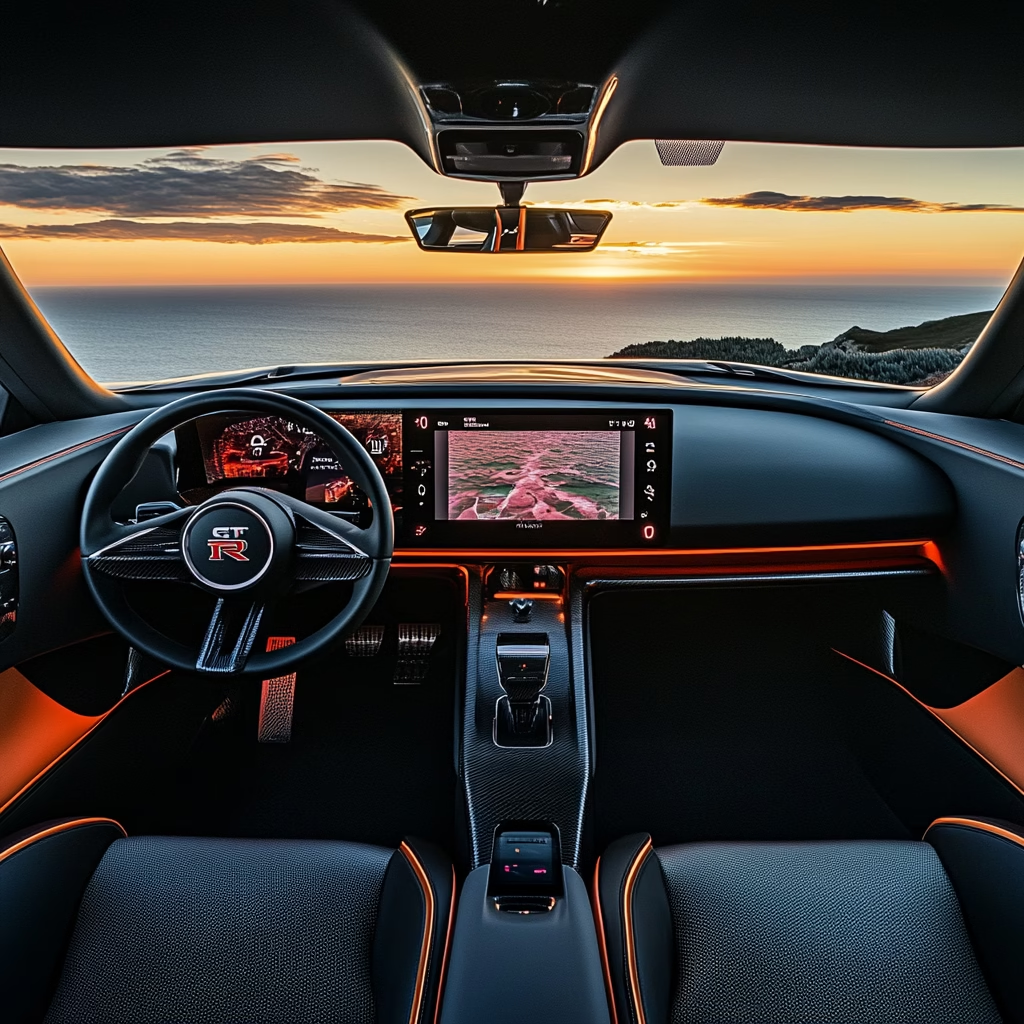The automotive world has been buzzing with anticipation as Nissan prepares to unveil the next generation of its legendary performance icon. The Nissan GT-R 2026 represents the most significant evolution of the “Godzilla” nameplate since the R35 generation debuted nearly two decades ago. This article explores what enthusiasts and potential buyers can expect from the upcoming GT-R, including its revolutionary powertrain, cutting-edge technology, and the design philosophy that honors its storied heritage while boldly stepping into the future.
A New Era for the GT-R Lineup
The Nissan GT-R has maintained its position as a performance benchmark since the current R35 generation launched in 2007. However, as automotive technology advances and emissions regulations tighten globally, Nissan has been working diligently behind the scenes to reimagine its halo car for the modern era. The 2026 GT-R represents the culmination of these efforts—a ground-up redesign that aims to maintain the model’s performance credentials while embracing electrification and advanced driver technologies.
Industry insiders report that Nissan has invested heavily in the GT-R’s development program, recognizing the importance of getting this iteration right. The 2026 model arrives at a critical juncture for performance cars, as manufacturers balance traditional driving engagement with sustainability requirements and changing consumer expectations.

Powertrain Revolution: Electrified Performance
Perhaps the most significant departure for the 2026 GT-R is its powertrain strategy. According to reliable sources close to the project, Nissan has developed a sophisticated hybrid system that combines a newly designed twin-turbocharged V6 engine with multiple electric motors. This approach differs from the purely combustion-powered predecessors while avoiding a complete pivot to all-electric propulsion.
The internal combustion component is expected to be a 3.0-liter twin-turbocharged V6, more compact than the current 3.8-liter VR38DETT but producing similar base power figures. The addition of electric motors—reportedly positioned at both axles—pushes the combined output to approximately 800 horsepower and 750 lb-ft of torque, representing a substantial increase over the current GT-R Nismo’s 600 horsepower.
This hybrid approach serves multiple purposes. First, it allows the GT-R to meet increasingly stringent emissions standards worldwide. Second, it enhances performance characteristics, with the electric motors providing instant torque at launch and filling power gaps during gear changes or turbo lag. Third, it enables limited all-electric driving capability in urban environments, addressing city center emissions restrictions being implemented globally.

Next-Generation ATTESA E-TS: Intelligent All-Wheel Drive
The GT-R has long been celebrated for its Advanced Total Traction Engineering System for All-terrain with Electronic Torque Split (ATTESA E-TS) all-wheel-drive system. The 2026 model evolves this technology significantly, integrating the electric motors into a more sophisticated torque vectoring system.
Unlike the mechanical/hydraulic approach of earlier generations, the new GT-R uses its electric motors to precisely distribute power to individual wheels with microsecond response times. This electrified ATTESA system provides unprecedented control in cornering situations, effectively eliminating understeer while maintaining the characteristic rear-biased feel that enthusiasts expect.
Test mules spotted at the Nürburgring suggest that the new drivetrain configuration has already produced lap times substantially quicker than the outgoing model, despite carrying the additional weight of battery packs and electric motors.

Design Philosophy: Honoring Heritage While Embracing the Future
Nissan’s designers faced a delicate balancing act with the 2026 GT-R’s exterior styling. The car needed to be immediately recognizable as a GT-R while expressing a modern design language appropriate for Nissan’s new flagship.
Leaked design sketches and camouflaged prototypes suggest a silhouette that maintains the distinctive GT-R proportions—muscular fenders, a long hood line, and a distinctive roofline—while introducing more aerodynamically efficient surfacing. The signature circular taillights remain, though reinterpreted with modern LED technology. The iconic quad exhaust outlets are maintained, reflecting the hybrid powertrain’s retention of internal combustion.
The front fascia presents the most dramatic departure, featuring a more integrated interpretation of Nissan’s V-motion grille. This design element serves both aesthetic and functional purposes, channeling air to cool the complex hybrid powertrain components while reducing aerodynamic drag.
Carbon fiber is used extensively throughout the body structure, allowing Nissan engineers to offset some of the weight penalty introduced by the hybrid system’s batteries. The overall weight is expected to remain close to the current GT-R, a remarkable achievement considering the additional electrification components.

Interior: Driver-Focused Digital Experience
Inside, the 2026 GT-R reflects a philosophy of purposeful technology. The driver-focused cockpit maintains physical controls for critical functions while introducing a new digital interface that Nissan calls the “GT-R Command Center.”
This system incorporates multiple high-resolution displays, including a digital instrument cluster and a central touchscreen, both customizable to display driving data, performance metrics, and hybrid system status. A head-up display projects essential information directly into the driver’s line of sight, minimizing distraction.
Material quality takes a significant step forward, with premium leather, Alcantara, and exposed carbon fiber elements creating an environment that befits the GT-R’s anticipated price point. Despite these luxury touches, the interior maintains a functional focus, with body-hugging sport seats and excellent outward visibility for high-speed driving.

Advanced Chassis Technology: The Evolution of Handling
Nissan engineers have developed an all-new platform for the 2026 GT-R, moving away from the PM platform that underpinned the R35. The new architecture features a mixed-material approach, with aluminum, high-strength steel, and carbon fiber composite elements strategically placed to optimize rigidity while managing weight.
The suspension system employs adaptive dampers with a wider range of adjustment than ever before, allowing the GT-R to transition from track-focused stiffness to a more compliant ride for everyday driving. Magnetic ride control technology enables real-time adjustments based on road conditions and driving style.
Braking performance receives similar attention, with new carbon-ceramic brakes standard on all trims. These larger diameter rotors provide improved heat management during extended track sessions while reducing unsprung weight compared to traditional steel rotors.

Connected Technology: The Intelligent GT-R
Connectivity features prominently in the 2026 GT-R, with Nissan integrating its latest NissanConnect system with GT-R-specific functionality. This includes a performance data recorder that logs driving sessions, providing detailed telemetry and video for later analysis.
A smartphone application allows owners to monitor vehicle status remotely, including battery charge levels, fluids, and tire pressures. The app also enables pre-conditioning of the cabin climate control and battery temperature management, optimizing the car for performance driving before the driver even enters the vehicle.
Voice control functionality has been expanded to include performance settings, allowing drivers to change drive modes and individual vehicle parameters through natural language commands without removing their hands from the steering wheel.

Expected Timeline and Global Availability
While Nissan has remained tight-lipped about the official reveal timeline, industry sources indicate that a concept version will debut at the Tokyo Motor Show in late 2025, with the production model following in early 2026. Initial deliveries are expected to begin in major markets by mid-2026.
Unlike previous generations that saw staggered global releases, Nissan plans a synchronized global launch for the new GT-R, recognizing the model’s international following. However, regulatory challenges may limit availability in some markets with particularly stringent emissions requirements.

Conclusion: Redefining the GT-R Legacy
The 2026 Nissan GT-R arrives at a pivotal moment for performance cars. As the industry navigates the transition toward electrification, Nissan has chosen a path that embraces new technology while preserving the character that has made the GT-R an icon.
By carefully evolving its design, implementing a sophisticated hybrid powertrain, and integrating cutting-edge technology, Nissan has ensured that the GT-R remains relevant and competitive in a rapidly changing automotive landscape. The 2026 model doesn’t just continue the GT-R lineage—it reinvents it for a new era while maintaining the performance-first philosophy that has defined the nameplate since its inception.
For enthusiasts and collectors alike, the 2026 GT-R represents perhaps the most compelling iteration of Nissan’s flagship to date—a technology showcase that delivers an emotional driving experience worthy of the Godzilla nickname. As we await its official unveiling, anticipation continues to build for what may be remembered as a defining moment in the history of Japanese performance cars.


